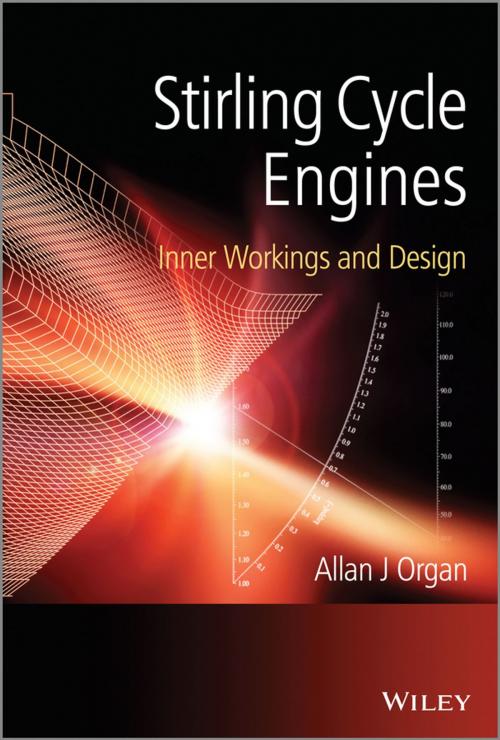Stirling Cycle Engines
Inner Workings and Design
Nonfiction, Science & Nature, Technology, Engineering, Mechanical| Author: | Allan J. Organ | ISBN: | 9781118818411 |
| Publisher: | Wiley | Publication: | November 15, 2013 |
| Imprint: | Wiley | Language: | English |
| Author: | Allan J. Organ |
| ISBN: | 9781118818411 |
| Publisher: | Wiley |
| Publication: | November 15, 2013 |
| Imprint: | Wiley |
| Language: | English |
Some 200 years after the original invention, internal design of a Stirling engine has come to be considered a specialist task, calling for extensive experience and for access to sophisticated computer modelling. The low parts-count of the type is negated by the complexity of the gas processes by which heat is converted to work. Design is perceived as problematic largely because those interactions are neither intuitively evident, nor capable of being made visible by laboratory experiment. There can be little doubt that the situation stands in the way of wider application of this elegant concept.
Stirling Cycle Engines re-visits the design challenge, doing so in three stages. Firstly, unrealistic expectations are dispelled: chasing the Carnot efficiency is a guarantee of disappointment, since the Stirling engine has no such pretentions. Secondly, no matter how complex the gas processes, they embody a degree of intrinsic similarity from engine to engine. Suitably exploited, this means that a single computation serves for an infinite number of design conditions. Thirdly, guidelines resulting from the new approach are condensed to high-resolution design charts – nomograms.
Appropriately designed, the Stirling engine promises high thermal efficiency, quiet operation and the ability to operate from a wide range of heat sources. Stirling Cycle Engines offers tools for expediting feasibility studies and for easing the task of designing for a novel application.
Key features:
- Expectations are re-set to realistic goals.
- The formulation throughout highlights what the thermodynamic processes of different engines have in common rather than what distinguishes them.
- Design by scaling is extended, corroborated, reduced to the use of charts and fully Illustrated.
- Results of extensive computer modelling are condensed down to high-resolution Nomograms.
- Worked examples feature throughout.
Prime movers (and coolers) operating on the Stirling cycle are of increasing interest to industry, the military (stealth submarines) and space agencies. Stirling Cycle Engines fills a gap in the technical literature and is a comprehensive manual for researchers and practitioners. In particular, it will support effort world-wide to exploit potential for such applications as small-scale CHP (combined heat and power), solar energy conversion and utilization of low-grade heat.
Some 200 years after the original invention, internal design of a Stirling engine has come to be considered a specialist task, calling for extensive experience and for access to sophisticated computer modelling. The low parts-count of the type is negated by the complexity of the gas processes by which heat is converted to work. Design is perceived as problematic largely because those interactions are neither intuitively evident, nor capable of being made visible by laboratory experiment. There can be little doubt that the situation stands in the way of wider application of this elegant concept.
Stirling Cycle Engines re-visits the design challenge, doing so in three stages. Firstly, unrealistic expectations are dispelled: chasing the Carnot efficiency is a guarantee of disappointment, since the Stirling engine has no such pretentions. Secondly, no matter how complex the gas processes, they embody a degree of intrinsic similarity from engine to engine. Suitably exploited, this means that a single computation serves for an infinite number of design conditions. Thirdly, guidelines resulting from the new approach are condensed to high-resolution design charts – nomograms.
Appropriately designed, the Stirling engine promises high thermal efficiency, quiet operation and the ability to operate from a wide range of heat sources. Stirling Cycle Engines offers tools for expediting feasibility studies and for easing the task of designing for a novel application.
Key features:
- Expectations are re-set to realistic goals.
- The formulation throughout highlights what the thermodynamic processes of different engines have in common rather than what distinguishes them.
- Design by scaling is extended, corroborated, reduced to the use of charts and fully Illustrated.
- Results of extensive computer modelling are condensed down to high-resolution Nomograms.
- Worked examples feature throughout.
Prime movers (and coolers) operating on the Stirling cycle are of increasing interest to industry, the military (stealth submarines) and space agencies. Stirling Cycle Engines fills a gap in the technical literature and is a comprehensive manual for researchers and practitioners. In particular, it will support effort world-wide to exploit potential for such applications as small-scale CHP (combined heat and power), solar energy conversion and utilization of low-grade heat.















